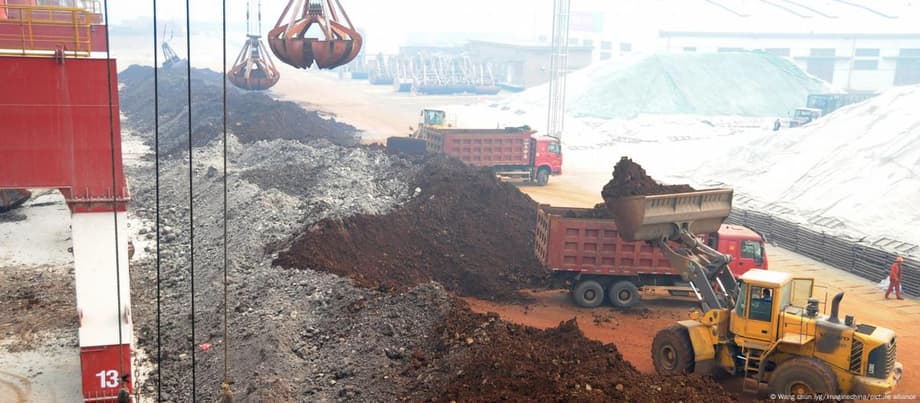Why rare earths matter now
Rare earth elements sit inside the motors, sensors and chips that keep modern life running. These 17 metallic elements give magnets high coercivity and heat resistance, which is why they power electric vehicle motors, wind turbine generators, smartphones, medical devices and radar systems. Without them, clean energy targets, advanced weapons, and the next wave of computing would be slower and more costly.
Supply is concentrated in a single country at the stages that matter most. China accounts for roughly 60 to 70 percent of global mining, around 90 percent of separation and refining, and close to 94 percent of permanent magnet manufacturing. The center of gravity is even stronger for heavy rare earths such as dysprosium and terbium, which are essential for high temperature magnets. This concentration turns a niche materials market into a major strategic risk for autos, energy, aerospace, and electronics.
That risk became immediate in 2025, when Beijing expanded export controls that reach far beyond raw ores. Licenses are now required to export magnets and other products that contain Chinese origin rare earth materials, or that were made using Chinese mining, processing, or magnet technologies. Controls can be triggered by trace content, with thresholds as low as 0.1 percent for heavy rare earth inputs. Companies that rely on Chinese content anywhere in their supplier stack must now seek approvals that can be slow, uncertain, and in some cases unattainable.
How China built dominance and why it is hard to displace
China assembled a full industry stack over decades, from mining and separation to alloying and magnet plants, with a deep bench of engineers and equipment makers. Costs were kept low through scale, proximity of mine and midstream facilities, and looser environmental standards. The result is an industrial ecosystem where feedstock, reagents, and skilled labor are close at hand, which shortens lead times and supports constant process improvement. In heavy rare earth processing, Chinese facilities are near a monopoly.
The leverage has been used before. In 2010 Japanese manufacturers reported that shipments stalled after an incident in the East China Sea, and a later ruling found China had breached trade rules by restricting exports. Prices spiked, projects outside China accelerated, then collapsed when prices fell back. Many investors retreated after 2011 to 2016, leaving a thinner pipeline of non Chinese assets just when demand began to surge.
These cycles matter because rare earth projects have long lead times and complex qualification steps. Magnet makers and end users need years to certify a new source of oxide, metal, and finished magnets. When prices swing, the business case for new mines or midstream plants can evaporate overnight, and the experience and equipment required to restart are not easy to rebuild.
What the 2025 export controls change
In April 2025, new Chinese rules covered several heavy rare earths and magnet related products. Export volumes fell in the following months. Carmakers in the United States and Europe faced tight supplies of high performance magnets, production schedules were adjusted, and prices outside China jumped.
In October 2025 the scope widened. Licenses are required for magnets and other products that contain Chinese materials or Chinese extraction, separation, or magnet technology, even when the item is made abroad. Requests tied to advanced chips and memory are subject to case by case review. Starting December 1, 2025, license applications tied to foreign militaries will be denied, and Chinese nationals face restrictions on supporting overseas rare earth projects without authorization. These steps extend control beyond raw materials into skills, process know how, and magnet production.
Interdependence or vulnerability
Interdependence has grown alongside risk. Trade data shows the United States exported increasing volumes of certain rare earth materials to China through 2022, with China then turning those inputs into components and final products that flow back to global markets. This two way trade supported the spread of low carbon technologies and kept costs low for consumers.
Interdependence can stabilize supply when politics is calm. Once approvals and licensing become policy tools, the same interconnections amplify shocks. Companies with even small Chinese content in their magnets now face legal scrutiny and waiting periods. The lesson is simple. Diversification must reach the midstream steps that turn concentrates into separated oxides, metals, alloys, and certified magnets.
Where alternatives are taking shape
Governments and companies are trying to build complete chains outside China. The United States is funding mining, separation, and magnet projects at home and with partners. Australia is expanding production capacity and attracting development finance. Japan is using a blend of public capital, offtake agreements, and technical support to back credible producers. The European Union is moving to reduce reliance with new rules, targeted support, and potential trade tools.
Japan’s playbook and the Lynas partnership
Tokyo responded to the 2010 shock with a mix of finance, offtake contracts, and process expertise. The Sojitz and JOGMEC partnership with Lynas in Australia created a stable pipeline of rare earth oxides for Japanese users, and the partnership extended to heavier elements in 2023. The approach shortened qualification cycles by tying funding directly to physical delivery and quality assurance, and it remains a template others can adapt.
The United States steps and timelines
Washington is blending industrial policy and friend shoring to reduce exposure. The United States Export Import Bank has signaled up to 200 million dollars in financing for VHM Limiteds Goschen project in Victoria, a deposit with both light and heavy rare earth oxides alongside zircon and rutile. The project has key approvals in place and is designed to scale, which makes it a candidate for long term offtake by electric vehicle and defense suppliers. In parallel, the administration has discussed a strategic reserve, price floors for domestic producers, and partnerships with allies for processing and magnets. New agreements announced across Asia seek to lock in supply, expand refining outside China, and coordinate stockpiles with partners such as Japan, Malaysia, Thailand, Vietnam, and Cambodia.
Andrew King, chief executive of VHM, called recent financing signals a turning point for supply chain security. He described the backing from a United States agency as a concrete step that can move a project from plans to construction.




